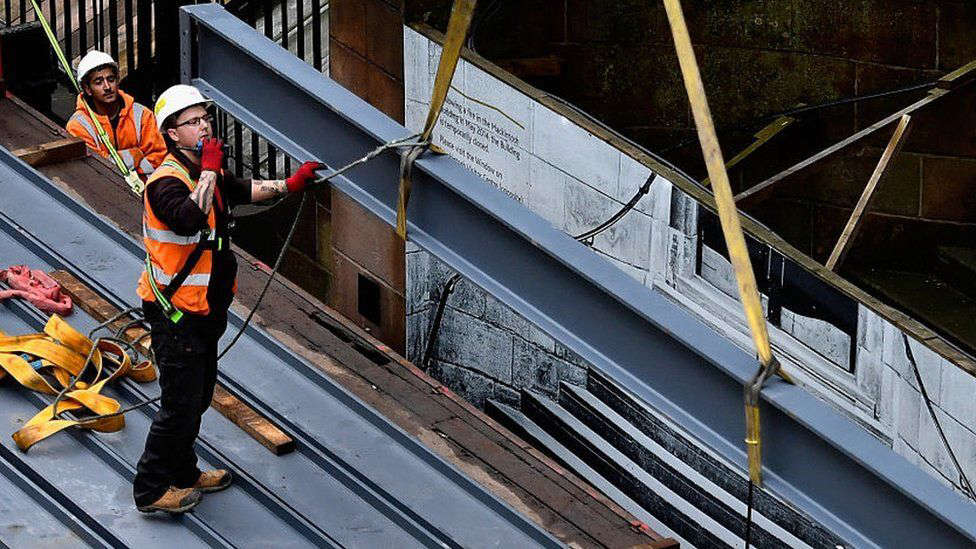

Government promises ‘new era’ for UK infrastructure delivery
Posted: Wednesday, April 2nd, 2025

The government has delivered on its election promise to abolish its independent infrastructure advisory panel and subsume it into the Treasury, The Construction Index reported. The National Infrastructure Commission (NIC) and the Treasury’s Infrastructure & Projects Authority (IPA) have been merged to create a new body called the National Infrastructure & Service Transformation Authority (NISTA). The NIC was established in 2015 to provide independent analysis and advice to the government, outlining the UK’s long-term infrastructure needs. That the government so quickly ignored its own recommendations – as evidenced by the cancellation of both the northern legs of HS2 and the slowness in delivering energy projects – is a testament to its failure. The NIC was intended to "take the politics out of infrastructure" by building a consensus among experts. Yet, infrastructure remains political – and prone to delays and cost overruns. In 2017, the NIC became an executive agency of the Treasury, thus losing its independence. Now, the new government has taken a further step and merged it with the Cabinet Office’s own executive infrastructure office, the IPA. Although the National Infrastructure Commission has been formally abolished, its commissioners – the independent experts – will now form an advisory council for NISTA. It is not yet clear how different, in practice, the NISTA Advisory Council will be from the National Infrastructure Commission. The government is keen to be seen to be making changes but reluctant to lose the expertise that the NIC brought. In a speech at Skanska’s UK head office in October, chief secretary to the Treasury Darren Jones explained the need for a project restructuring in Whitehall. The National Infrastructure Commission, as we are all aware, has produced excellent strategic reports outlining the country's infrastructure needs. The Infrastructure & Projects Authority’s expertise and commitment to delivering critical infrastructure projects are unmatched. But the government has collectively still failed to deliver in the past. This is what we will change,” he said. Yesterday, Jones said: “NISTA will get a grip on the delays to infrastructure delivery that for too long have plagued our global reputation with investors. We are ushering in a new era for infrastructure delivery, restoring the confidence of businesses to invest and driving a decade of national renewal, powering growth across the country, and delivering on our Plan for Change.” However, NISTA begins its life without a chief executive and a national infrastructure strategy. It is currently led by Jean-Christophe Gray, whose previous roles include serving as prime minister David Cameron’s official spokesperson and private secretary to Prince William between 2021 and 2024. He joined the Cabinet Office last year. A permanent chief executive of NISTA will be appointed “shortly”, the Treasury said, along with a new version of the 10-year infrastructure strategy, last published in 2020. There is also Whitehall politics at play. NISTA is part of the Treasury, as was the NIC; the IPA was part of the Cabinet Office. The Treasury and the Cabinet Office are currently working on a memorandum of understanding that outlines the precise relationship between NISTA and the two departments.
Trending Stories
-
 Essex electrician has roundabout signs rejected
Essex electrician has roundabout signs rejected
A sparkie’s bid to sponsor signs on two roundabouts has been refused by planning chiefs who described them as “clutter”
-
 Barbie caused a ‘worldwide’ shortage of pink paint
Barbie caused a ‘worldwide’ shortage of pink paint
Barbie needed so much fluorescent pink paint that it caused a worldwide supply shortage for an entire company
-
 Builders find body of man murdered in the 1960s and buried in back garden
Builders find body of man murdered in the 1960s and buried in back garden
A woman who bought a South London house was left horrified after builders discovered the body of a man murdered in the 1960s and buried in her garden 14 months after she moved in
-
 'Government insulation scheme ruined my home'
'Government insulation scheme ruined my home'
A home-owner said his flat has been ruined by black mould caused by a government "green" insulation schem
-
 Builder celebrates lottery win by buying his coworkers bacon butties
Builder celebrates lottery win by buying his coworkers bacon butties
A builder from Milford Haven who won big on the lottery celebrated his victory by treating all his workmates to a round of bacon rolls
Comments
Add a comment